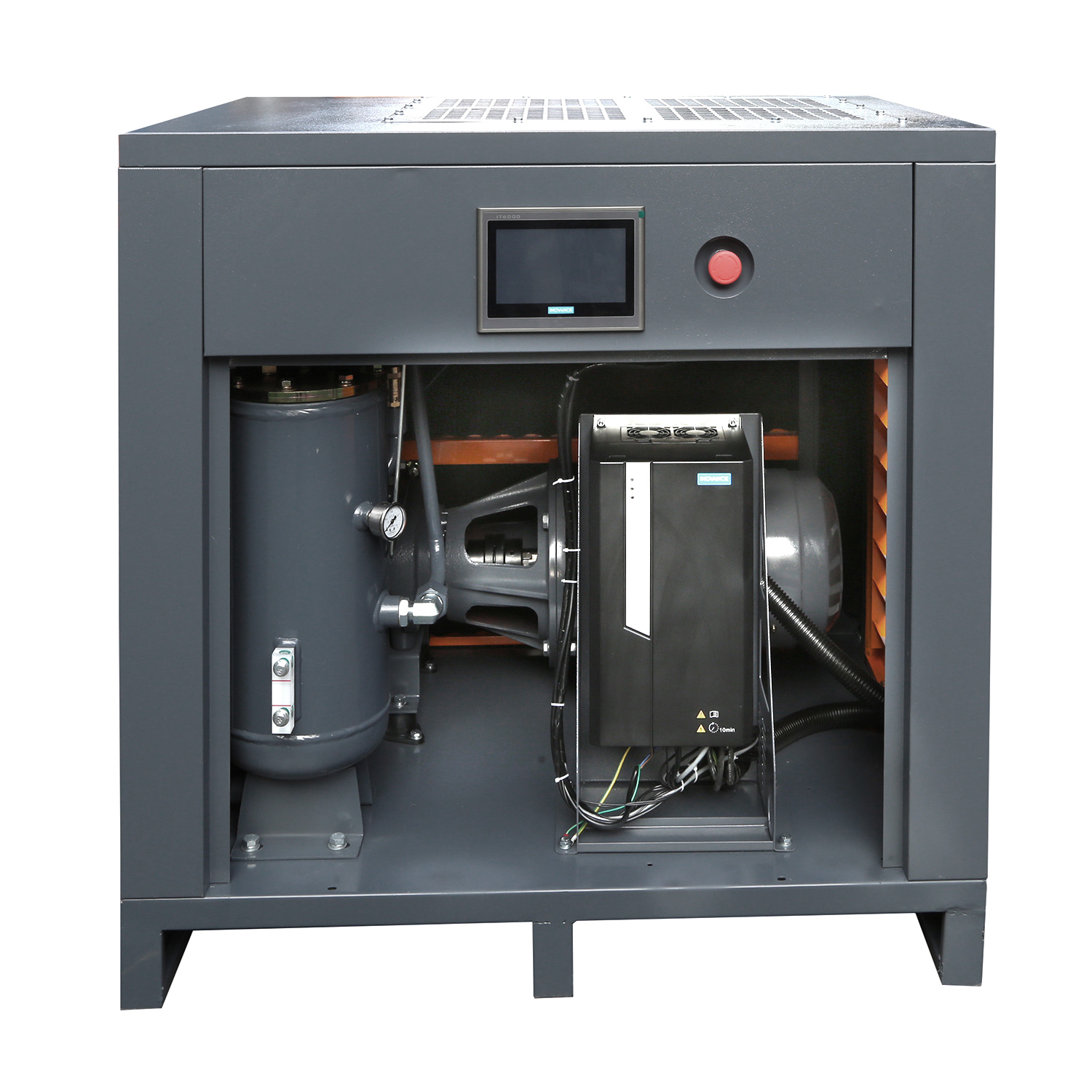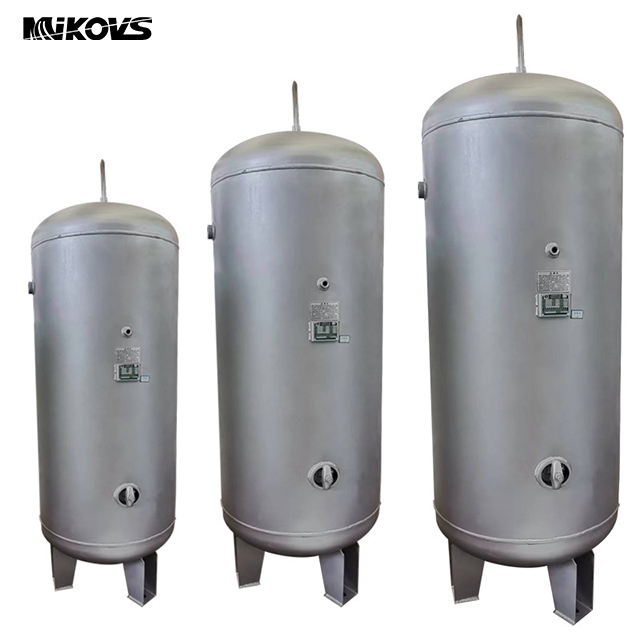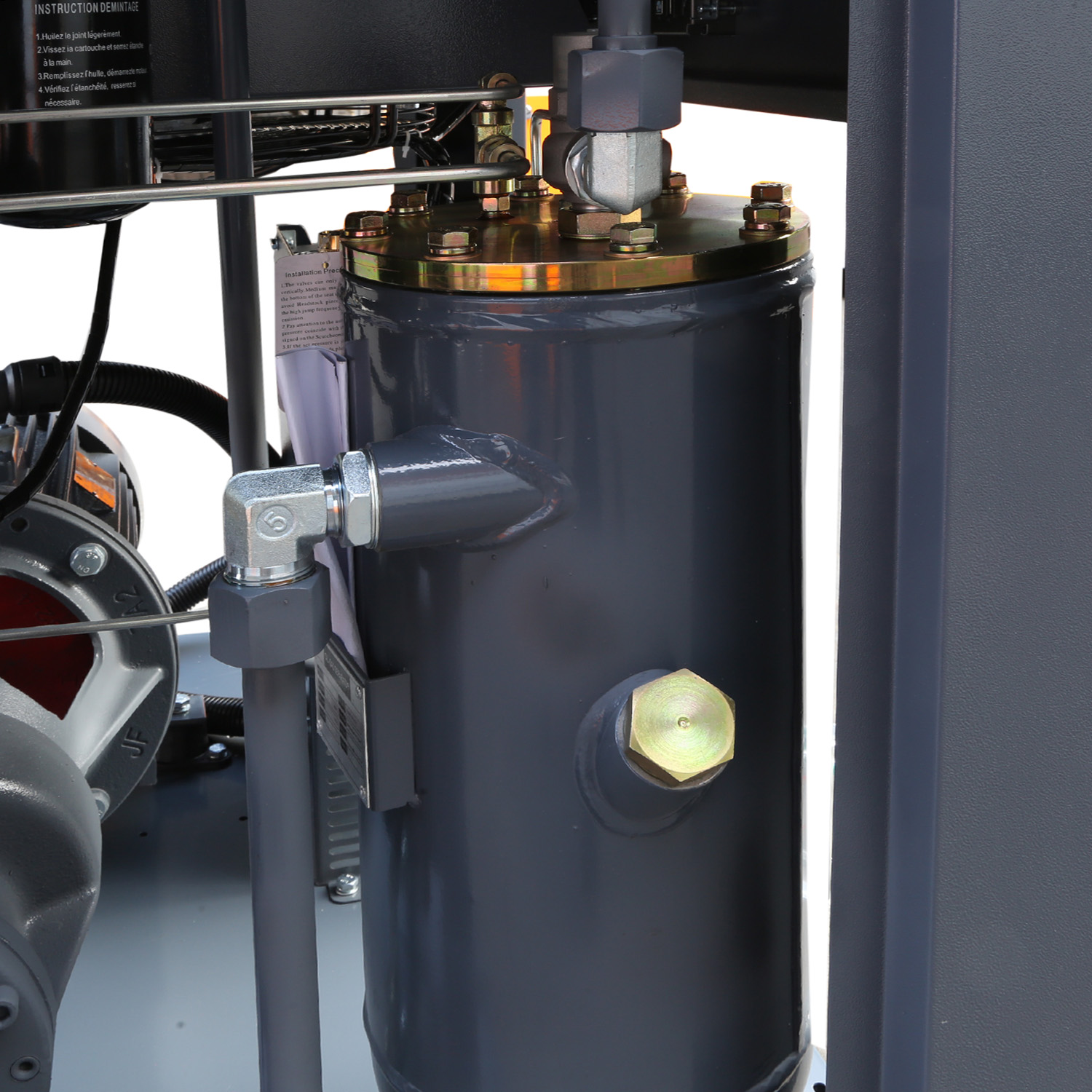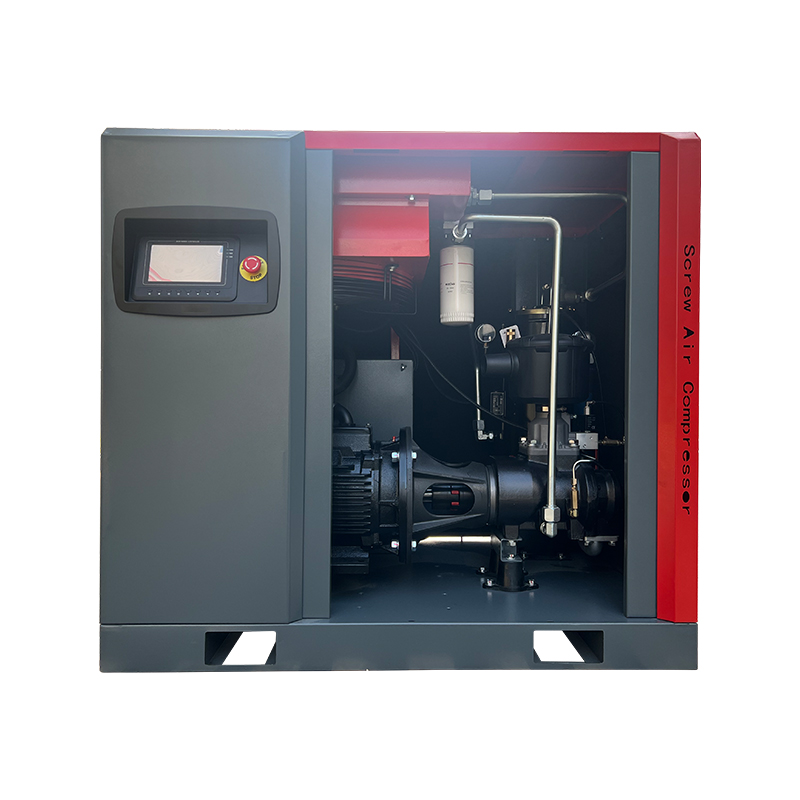Give you a comprehensive understanding of the structure, working principle, advantages and disadvantages of axial flow compressors
Knowledge about axial compressors
Axial flow compressors and centrifugal compressors both belong to the speed type compressors, and both are called turbine compressors; the meaning of speed type compressors means that their working principles rely on the blades to do work on the gas, and first make the gas flow The flow velocity is greatly increased before converting kinetic energy into pressure energy. Compared with the centrifugal compressor, since the flow of gas in the compressor is not along the radial direction, but along the axial direction, the biggest feature of the axial flow compressor is that the gas flow capacity per unit area is large, and the same Under the premise of processing gas volume, the radial dimension is small, especially suitable for occasions requiring large flow. In addition, the axial flow compressor also has the advantages of simple structure, convenient operation and maintenance. However, it is obviously inferior to centrifugal compressors in terms of complex blade profile, high manufacturing process requirements, narrow stable working area, and small flow adjustment range at constant speed.
The following figure is a schematic diagram of the structure of the AV series axial flow compressor:
1. Chassis
The casing of the axial flow compressor is designed to be split horizontally and is made of cast iron (steel). It has the characteristics of good rigidity, no deformation, noise absorption and vibration reduction. Tighten with bolts to connect the upper and lower halves into a very rigid whole.
The casing is supported on the base at four points, and the four support points are set on both sides of the lower casing close to the middle split surface, so that the support of the unit has good stability. Two of the four support points are fixed points, and the other two are sliding points. The lower part of the casing is also provided with two guide keys along the axial direction, which are used for thermal expansion of the unit during operation.
For large units, the sliding support point is supported by a swing bracket, and special materials are used to make the thermal expansion small and reduce the change of the center height of the unit. In addition, an intermediate support is set to increase the rigidity of the unit.
2. Static vane bearing cylinder
The stationary vane bearing cylinder is the support cylinder for the adjustable stationary vanes of the compressor. It is designed as a horizontal split. The geometric size is determined by the aerodynamic design, which is the core content of the compressor structure design. The inlet ring matches the intake end of the stationary vane bearing cylinder, and the diffuser matches the exhaust end. They are respectively connected with the casing and the sealing sleeve to form the converging passage of the intake end and the expansion passage of the exhaust end. A channel and the channel formed by the rotor and the vane bearing cylinder are combined to form a complete air flow channel of the axial flow compressor.
The cylinder body of the stationary vane bearing cylinder is cast from ductile iron and has been precision machined. The two ends are respectively supported on the casing, the end near the exhaust side is a sliding support, and the end near the air intake side is a fixed support.
There are rotatable guide vanes at various levels and automatic vane bearings, cranks, sliders, etc. for each guide vane on the vane bearing cylinder. The stationary leaf bearing is a spherical ink bearing with good self-lubricating effect, and its service life is more than 25 years, which is safe and reliable. A silicone sealing ring is installed on the vane stalk to prevent gas leakage and dust entry. Filling sealing strips are provided on the outer circle of the exhaust end of the bearing cylinder and the support of the casing to prevent leakage.
3. Adjustment cylinder and vane adjustment mechanism
The adjustment cylinder is welded by steel plates, split horizontally, and the middle split surface is connected by bolts, which has high rigidity. It is supported inside the casing at four points, and the four support bearings are made of non-lubricated “Du” metal. The two points on one side are semi-closed, allowing axial movement; the two points on the other side are developed The type allows axial and radial thermal expansion, and guide rings of various stages of vanes are installed inside the adjusting cylinder.
The stator blade adjustment mechanism is composed of a servo motor, a connecting plate, an adjustment cylinder and a blade support cylinder. Its function is to adjust the angle of the stator blades at all levels of the compressor to meet the variable working conditions. Two servo motors are installed on both sides of the compressor and connected with the adjusting cylinder through the connecting plate. The servo motor, power oil station, oil pipeline, and a set of automatic control instruments form a hydraulic servo mechanism for adjusting the angle of the vane. When the 130bar high-pressure oil from the power oil station acts, the piston of the servo motor is pushed to move, and the connecting plate drives the adjustment cylinder to move synchronously in the axial direction, and the slider drives the stator vane to rotate through the crank, so as to achieve the purpose of adjusting the angle of the stator vane. It can be seen from the aerodynamic design requirements that the adjustment amount of the vane angle of each stage of the compressor is different, and generally the adjustment amount decreases successively from the first stage to the last stage, which can be realized by selecting the length of the crank, that is, from the first stage to the last stage increasing in length.
The adjusting cylinder is also called “middle cylinder” because it is placed between the casing and the blade bearing cylinder, while the casing and the blade bearing cylinder are called “outer cylinder” and “inner cylinder” respectively. This three-layer cylinder structure greatly reduces the deformation and stress concentration of the unit due to thermal expansion, and at the same time prevents the adjustment mechanism from dust and mechanical damage caused by external factors.
4. rotor and blades
The rotor is composed of the main shaft, moving blades at all levels, spacer blocks, blade locking groups, bee blades, etc. The rotor is of equal inner diameter structure, which is convenient for processing.
The spindle is forged from high alloy steel. The chemical composition of the main shaft material needs to be strictly tested and analyzed, and the performance index is checked by the test block. After rough machining, a hot running test is required to verify its thermal stability and eliminate part of the residual stress. After the above indicators are qualified, it can be put into finishing machining. After finishing finishing, coloring inspection or magnetic particle inspection is required at the journals at both ends, and cracks are not allowed.
The moving blades and stationary blades are made of stainless steel forging blanks, and the raw materials need to be inspected for chemical composition, mechanical properties, non-metallic slag inclusions and cracks. After the blade is polished, wet sandblasting is performed to enhance the surface fatigue resistance. The forming blade needs to measure the frequency, and if necessary, it needs to repair the frequency.
The moving blades of each stage are installed in the rotating vertical tree-shaped blade root groove along the circumferential direction, and the spacer blocks are used to position the two blades, and the locking spacer blocks are used to position and lock the two moving blades installed at the end of each stage. tight.
There are two balance discs processed at both ends of the wheel, and it is easy to balance the weights in two planes. The balance plate and the sealing sleeve form a balance piston, which functions through the balance pipe to balance part of the axial force generated by the pneumatic, reduce the load on the thrust bearing, and make the bearing in a safer environment
5. Gland
There are shaft end seal sleeves on the intake side and exhaust side of the compressor respectively, and the seal plates embedded in the corresponding parts of the rotor form a labyrinth seal to prevent gas leakage and internal seepage. In order to facilitate the installation and maintenance, it is adjusted through the adjustment block on the outer circle of the sealing sleeve.
6. Bearing box
Radial bearings and thrust bearings are arranged in the bearing box, and the oil for lubricating the bearings is collected from the bearing box and returned to the oil tank. Usually, the bottom of the box is equipped with a guide device (when integrated), which cooperates with the base to make the unit center and thermally expand in the axial direction. For the split bearing housing, three guide keys are installed at the bottom of the side to facilitate the thermal expansion of the housing. An axial guide key is also arranged on one side of the casing to match the casing. The bearing box is equipped with monitoring devices such as bearing temperature measurement, rotor vibration measurement, and shaft displacement measurement.
7. bearing
Most of the axial thrust of the rotor is borne by the balance plate, and the remaining axial thrust of about 20~40kN is borne by the thrust bearing. The thrust pads can be automatically adjusted according to the size of the load to ensure that the load on each pad is evenly distributed. The thrust pads are made of carbon steel cast Babbitt alloy.
There are two types of radial bearings. Compressors with high power and low speed use elliptical bearings, and compressors with low power and high speed use tilting pad bearings.
Large-scale units are generally equipped with high-pressure jacking devices for the convenience of starting. The high-pressure pump generates a high pressure of 80MPa in a short time, and a high-pressure oil pool is installed under the radial bearing to lift the rotor and reduce starting resistance. After starting, the oil pressure drops to 5~15MPa.
The axial flow compressor works under the design conditions. When the operating conditions change, its operating point will leave the design point and enter the non-design operating condition area. At this time, the actual air flow situation is different from the design operating condition. , and under certain conditions, an unstable flow condition occurs. From the current point of view, there are several typical unstable working conditions: namely, rotating stall working condition, surge working condition and blocking working condition, and these three working conditions belong to aerodynamic unstable working conditions.
When the axial flow compressor works under these unstable working conditions, not only will the working performance be greatly deteriorated, but sometimes strong vibrations will occur, so that the machine cannot work normally, and even serious damage accidents will occur.
1. Rotating stall of axial flow compressor
The area between the minimum angle of the stationary vane and the minimum operating angle line of the characteristic curve of the axial flow compressor is called the rotating stall area, and the rotating stall is divided into two types: progressive stall and abrupt stall. When the air volume is less than the rotational stall line limit of the axial-flow main fan, the airflow on the back of the blade will break away, and the airflow inside the machine will form a pulsating flow, which will cause the blade to generate alternating stress and cause fatigue damage.
In order to prevent stalling, the operator is required to be familiar with the characteristic curve of the engine, and to pass through the stalling zone quickly during the start-up process. During the operation process, the minimum stator blade angle should not be lower than the specified value according to the manufacturer’s regulations.
2. Axial Compressor Surge
When the compressor works in conjunction with a pipe network with a certain volume, when the compressor operates at a high compression ratio and low flow rate, once the compressor flow rate is less than a certain value, the back arc airflow of the blades will be seriously separated until the passage is blocked, and the airflow will pulsate strongly. And form an oscillation with the air capacity and air resistance of the outlet pipe network. At this time, the airflow parameters of the network system fluctuate greatly as a whole, that is, the air volume and pressure change periodically with time and amplitude; the power and sound of the compressor both change periodically. . The above-mentioned changes are very severe, causing the fuselage to vibrate strongly, and even the machine cannot maintain normal operation. This phenomenon is called surge.
Since surge is a phenomenon that occurs in the entire machine and network system, it is not only related to the internal flow characteristics of the compressor, but also depends on the characteristics of the pipe network, and its amplitude and frequency are dominated by the volume of the pipe network.
The consequences of surge are often serious. It will cause the compressor rotor and stator components to undergo alternating stress and fracture, causing interstage pressure abnormality to cause strong vibration, resulting in damage to seals and thrust bearings, and causing the rotor and stator to collide. , causing serious accidents. Especially for high-pressure axial flow compressors, surge may destroy the machine in a short time, so the compressor is not allowed to operate under surge conditions.
From the above preliminary analysis, it is known that the surge is firstly caused by the rotation stall caused by the non-adjustment of the aerodynamic parameters and geometric parameters in the compressor blade cascade under variable working conditions. But not all rotating stalls will necessarily lead to surge, the latter is also related to the pipe network system, so the formation of surge phenomenon includes two factors: internally, it depends on the axial flow compressor Under certain conditions, a sudden sudden stall occurs; externally, it is related to the capacity and characteristic line of the pipe network. The former is an internal cause, while the latter is an external condition. The internal cause only promotes surge with the cooperation of external conditions.
3. Blockage of axial compressor
The blade throat area of the compressor is fixed. When the flow rate increases, due to the increase of the axial velocity of the airflow, the relative velocity of the airflow increases, and the negative angle of attack (the angle of attack is the angle between the direction of the airflow and the installation angle of the blade inlet) also increases. At this time, the average airflow on the smallest section of the cascade inlet will reach the speed of sound, so that the flow through the compressor will reach a critical value and will not continue to increase. This phenomenon is called blocking. This blocking of the primary vanes determines the maximum flow of the compressor. When the exhaust pressure decreases, the gas in the compressor will increase the flow rate due to the increase in expansion volume, and blockage will also occur when the air flow reaches the speed of sound in the final cascade. Because the air flow of the final blade is blocked, the air pressure in front of the final blade increases, and the air pressure behind the final blade decreases, causing the pressure difference between the front and rear of the final blade to increase, so that the force on the front and rear of the final blade is unbalanced and stress may be generated. cause blade damage.
When the blade shape and cascade parameters of an axial flow compressor are determined, its blocking characteristics are also fixed. Axial compressors are not allowed to run for too long in the area below the choke line.
Generally speaking, the anti-clogging control of the axial flow compressor does not need to be as strict as the anti-surge control, the control action is not required to be fast, and there is no need to set a trip stop point. As for whether to set the anti-clogging control, it is also up to the compressor itself Ask for a decision. Some manufacturers have taken into account the strengthening of the blades in the design, so they can withstand the increase of flutter stress, so they don’t need to set up blocking control. If the manufacturer does not consider that the blade strength needs to be increased when the blocking phenomenon occurs in the design, anti-blocking automatic control facilities must be provided.
The anti-clogging control scheme of the axial flow compressor is as follows: a butterfly anti-clogging valve is installed on the outlet pipeline of the compressor, and the two detection signals of the inlet flow rate and the outlet pressure are simultaneously input to the anti-clogging regulator. When the outlet pressure of the machine drops abnormally and the working point of the machine falls below the anti-blocking line, the output signal of the regulator is sent to the anti-blocking valve to make the valve close smaller, so the air pressure increases, the flow rate decreases, and the working point enters the anti-blocking line. Above the blocking line, the machine gets rid of the blocking condition.





